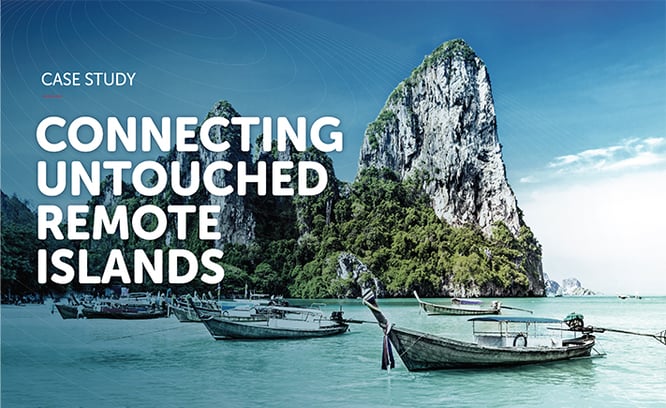The sun is high in the sky. Turquoise waters gently lap against the side of a ferry and the sight of powdery white beaches, thick coconut groves, and evergreen forests glide gracefully along the coastline. Serenity. Calmness. Completely disconnected.
Many previously untouched islands of one picturesque Southeast Asian country are becoming more accessible, with tourists flocking to their idyllic beaches, calm waters and unspoiled beauty. These islands are undergoing a massive transformation as tourism is aggressively promoted. And their geographical isolation creates a strong desire for telecom connections with the mainland.
THE CHALLENGE
Connect islands to the mainland | Upgrade little to no mobile infrastructure | Promote tourism | Provide reliable and highest backbone capacity over sea water in harsh climate
A large mobile operator in Southeast Asia challenged Ceragon to deliver 4G services to remote islands previously untouched by tourists and with little existing telecom infrastructure and towers. The operator required a highly reliable and durable 4G backbone capacity that would span as far as 100 km over sea water, while withstanding a challenging climate with high winds and heavy rainfall. After comparing several wirelesses backhaul solutions, the operator selected Ceragon as its long-term strategic partner for launching 4G advanced mobile services in the islands.
THE SOLUTION
Split-mount solution| Low power consumption | High-capacity backbone| Multi-core technology |Remotely upgradable solution
To deploy hundreds of wireless backbone links from the islands to the mainland, the carrier adopted Ceragon’s FibeAir IP-20N multi-carrier, split-mount solution. By teaming up with Ceragon, the mobile operator successfully implemented a highly resilient yet cost-effective transmission solution that significantly reduced overall operating expenses (OPEX). The network rollout allowed residents and businesses to create new opportunities for economic development and increased the quality of services when reaching existing customers and new markets. The high-speed connections encouraged tourists to share their experiences in real time, thereby attracting more people to visit the islands.
Ceragon’s IP-20N enabled the operator to:
- Provide highest capacity backbone links, ranging from 3.2 to 4.8/5 Gbps, over the sea.
- Use smaller antennas without compromising link performance due to Ceragon’s unique branching design and high-power radios.
- Leverage the benefits of Ceragon’s multi-carrier RF units and remote upgrading of links as the network grows from an initial 4+0 configuration to 8+0/10+0 and finally 16+0 configurations.
- Consume almost 50% less energy vs. typical long-haul solutions; electricity consumption automatically decreases in accordance with lower transmission requirements, and only increases when transmitting at high capacity.
- Provide the highest system gain and transmit (Tx) power to deliver robust and resilient links.
- Minimize site visits by remotely activating additional transceivers; no additional equipment is needed, no truck rolls or tower climbs are required (especially important in such inaccessible sites), and no service downtime is required.
- Achieve significantly faster time to market.
- Save hundreds of thousands of dollars in OPEX spending.
Enabling reliable connectivity and high-speed internet helped attract more tourists, residents and business people, introducing new ways of living, working and sharing information that previously were impossible on those beautiful remote islands.

